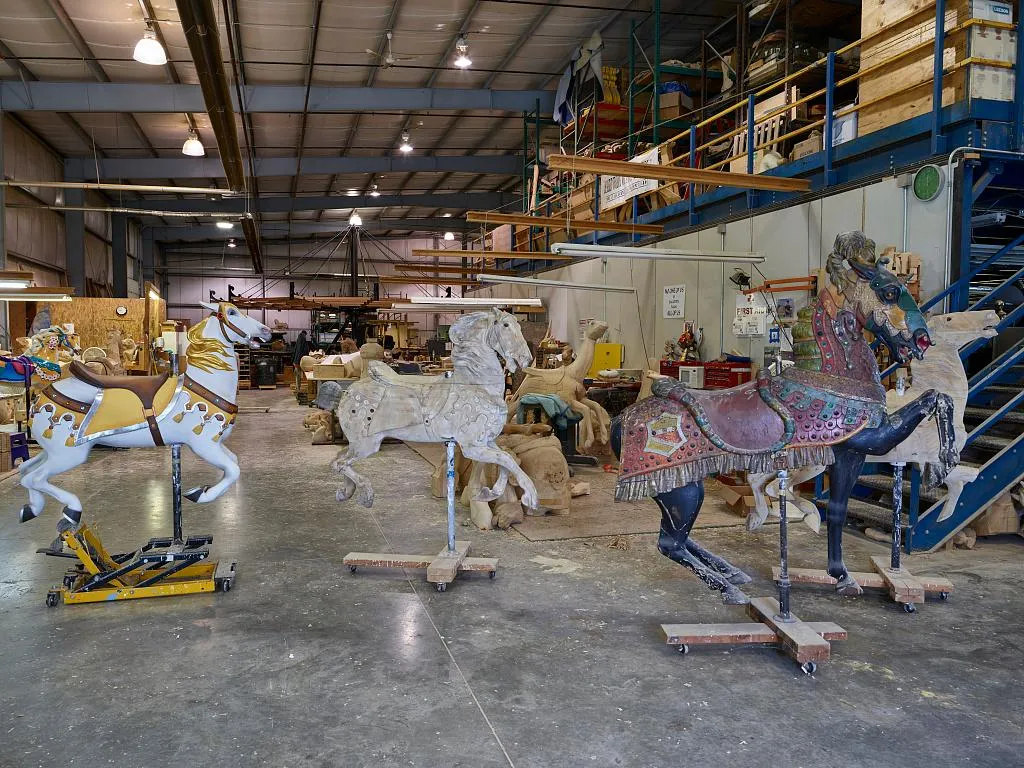The Dizzy History of Carousels Begins With Knights
Practice makes perfect–but nobody said it couldn’t be fun
/https://tf-cmsv2-smithsonianmag-media.s3.amazonaws.com/filer/27/ab/27ab296a-6909-4cc1-9709-6d2aec45e00e/carousel1.jpg)
Who knew that the simple carousel, now a kids' fairground ride, had such a long history?
According to the International Independent Showmen’s Museum, the word “carousel” derives from "little war," a training game that originated with Arabian and Turkish warriors in the 12th century, writes Entertainment Designer. Although it must have looked sort of whimsical, the game was a serious exercise in horsemanship: it “involved tossing a clay ball filled with perfume between riders,” writes the magazine. The player who failed to catch the ball would reek of perfume until they could wash.
The Spanish and Italian words for “little war” were garosello and carosella, which eventually became the French word "carousel." The French also improved on the "little war" training game by developing a device to practice for carousel competitions that was the direct progenitor of the fairground ride.
In order to prepare for these competitions, a practice device was created which featured legless wooden horses suspended from arms on a central rotating pole. The pole was rotated either by human, horse, or mule, while the horsemen mounted on the wooded horses practiced games such as spearing a hanging ring with their jousting lances.
Sounds like fun, right? Civilians at the time agreed. Games based on the carousel started appearing, and by the nineteenth century, writes Laura Kiniry for Popular Mechanics, carousels that strongly resembled the ones the knights used were entertaining European fairgoers.
The issue at this point was power: “Some early carousels were human-powered, meaning a person would rotate the entire structure using either a hand crank or pull rope,” Kiniry writes. “Others relied on animal power.”

Because the horses hung in the air, the centrifugal force caused riders to fly outwards when the ride was in motion, giving rise to the name “flying-horses carousel.” Carousel technology also went on a short divergence with the creation of bicycle-powered carousels. But it wasn’t until 1861, with the first steam-powered carousel, that the device became what we know today.
An English man named Thomas Bradshaw created the first such ride, writes the National Fairground and Circus Archive at the University of Sheffield. Bradshaw debuted his ride in 1861 and patented it in 1863. In that year, a local newspaper described Bradshaw’s ride as “‘… [a] roundabout of huge proportions, driven by a steam engine which whirled around with such impetuosity, that the wonder is the daring riders are not shot off like cannon-ball, and driven half into the middle of next month.’”
“The impact of the steam machine on the development of the riding machine was profound,” writes the archive. It wasn’t until the carousel came to America, though, that the golden age of the carousel began. “The American carousels were huge compared to their European counterparts and the woodwork of the horses was extremely elaborate,” writes Entertainment Designer. Zoo animals and mythical beasts were added to the rides, as was the ability to go up and down as well as in a circle.